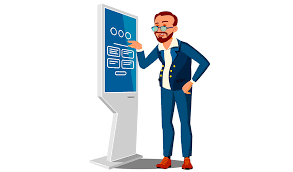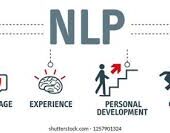The importance of effective customer service, particularly through self-service options, cannot be overstated. Both customers and organizations often prefer self-service solutions: customers to avoid waiting on hold and speaking with potentially uninformed agents, and organizations to reduce the load and cost associated with live agent interactions.
Despite the clear benefits, the customer experience with self-service often falls short because it tends to prioritize business efficiencies over customer needs. For self-service to truly succeed, it must be mutually beneficial for both businesses and customers. According to Salesforce’s “State of the Connected Customer” study, 61% of customers prefer using self-service over live-agent phone calls for resolving simple issues. This trend is reflected in the growing use of self-service portals and chatbots, with 72% of customers utilizing self-service portals and 55% engaging with self-service chatbots. However, a significant barrier remains: 68% of customers would avoid using a company’s chatbot after a negative experience.
The challenge lies in moving from a business-centric approach to a customer-centric one when deploying self-service technologies. Often, businesses implement these solutions primarily to cut costs, which can result in poorly designed interfaces that fail to meet customer expectations. This disconnect can harm customer satisfaction and loyalty in the long run.
The integration of AI offers a promising solution. Unlike earlier iterations, today’s AI-driven chatbots can deliver personalized, context-aware interactions based on customer data and history. This capability ensures that customers receive timely, relevant assistance across multiple channels, enhancing the overall self-service experience.
When deploying self-service capabilities, organizations should adopt a customer-first mindset:
- Use AI judiciously and extensively test self-service functionalities to prevent the pitfalls of previous chatbot failures.
- Leverage specialized AI models designed for customer experience (CX) applications to maximize the effectiveness of self-service solutions.
- Always provide an option for customers to escalate to a live agent when needed, ensuring seamless continuity and context transfer.
- Prioritize transparency and trust by informing customers when they’re interacting with AI-driven systems.
Successful self-service implementation hinges on these considerations, aiming not only to deflect calls but also to elevate customer satisfaction through intuitive, responsive self-service experiences. For further insights on optimizing self-service strategies, join our upcoming webinar discussing holistic CX strategies on July 10. We look forward to exploring how to empower customers to self-serve effectively, ensuring mutual benefits for organizations and their clientele.
Customers Expect a Lot from Self-Service, and Too Few Get What They Want or Need
Customers expect a lot from self-service channels — more than them just being available 24/365. They want answers to myriad questions or issues, and information about products and services. But the average self-service success rate today is just 14%. Improving this rate is a significant or moderate priority for 90% of customer service and support leaders Gartner recently surveyed.
Customer support teams must provide always-on problem-solving across all of the self-service channels they offer — from site search to AI chatbots, to the portal to IVR and messaging apps.
To think about the entirety of the modern service delivery model — even as customer demands evolve — focus on a few key areas:
- Prioritize CX and Engagement. Organizations with the most successful self-service track records prioritize customer experience (CX) and customer engagement as much as reducing contact volume in assisted service channels. Focus on delivering a quality customer experience and addressing customer needs, and not just on deflecting calls.
- Consider Additional Signals of Customer Demand. Including surveys, clickstream analytics, and insight engines that track what users are searching for beyond incoming calls.
- Treat Self-Service Investments as Products, Not Projects. Commit resources to continuously improve and update self-service capabilities after launch.
Gartner recommends that to meet the support organization’s goals and objectives, the self-service experience should include 11 foundational capabilities. Each improves some aspects of CX and elements of the search-to-resolution process. Together they drive significantly more business value, create effortless customer experiences, and improve overall self-service adoption and success. Here are the 11 capabilities:
- External and Site Search. Provide content context, relevance, and value in search results. Optimize for external search engines and include machine learning and AI capabilities.
- Usability, Design, and Navigation. Ensure a consistent and user-friendly look and feel. Use predictable navigation menus, mobile responsiveness, and accessibility.
- Personalization. Enable customers to create profiles and tailor their experiences based on preferences, history, and real-time behavior.
- Globalization. Translate and localize menus, content, and search experiences based on the customer’s language and locale.
- Content, Knowledge, and Education. Offer high-quality, customer-focused content that is easy to follow and provides direct answers to specific questions. Leverage rich media and feedback mechanisms.
- Virtual Customer Assistants (VCAs) and Bots. Deploy bots and virtual customer assistants to deliver information, perform transactions, and engage in conversations.
- Case Management. Allow customers to submit details of their interactions or inquiries to assisted support via the self-service website. Integrate with CRM or case management solutions.
- Assisted Support. Provide human-based support options when self-service resolution fails or when customers require assisted support.
- Community Engagement. Create an online space for customers, associates, partners, and experts to interact, share information, and find knowledge.
- Tools. Enable customers to carry out specific functions or tasks through self-service, such as ordering, scheduling, tracking, or troubleshooting.
- Reporting and Analytics. Collect, measure, and analyze self-service usage data and feedback. Use surveys, SEO, website analytics, clickstream analytics, and customer journey analytics.













